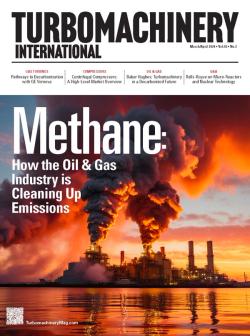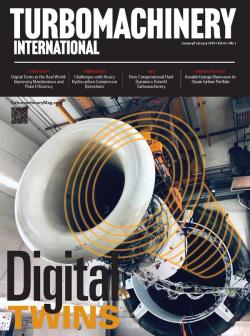
OR WAIT null SECS
© 2024 MJH Life Sciences™ and Turbomachinery Magazine. All rights reserved.
Myth: High-Pressure Pipelines Make Economic Sense
We all know that bigger, faster and higher is always better, right? So, every once in a while, the topic of high-pressure pipelines comes up in technical discussions as the most effective way to transport gas over land. In general, pipelines operating at pressures higher than about 1,700 psi are considered to be high pressure because the standard ANSI 600 rated flanges are no longer adequate.
The basic concept is that higher pipeline operating pressures allow for smaller pipes, reduce pressure drop, and thus require less installed compression power. Specifically, a fluid at a higher pressure has a disproportionally lower specific volume and is thus easier to transport. The argument seems compelling, but the reality is that very few of these pipelines have been built. Why is that?
The obvious and simple counter-argument is that higher-pressure pipelines require thicker walls or more expensive materials to safely contain the gas. But the answer is actually more complex. A gas at pressures above its phase diagram critical pressure is referred to as being in the dense phase.
For example, natural gas above about 2,200 psi is in dense phase. Under moderate pressures, most gases will form liquids if the temperature is reduced sufficiently. Beyond the critical pressure in the dense phase, no phase change occurs with temperature reduction.
In this region of the phase diagram, the distinction between liquid and gas is no longer practical. This also means that at pressures above the critical pressure and at temperatures roughly around the critical temperature, the gas can be pumped by machines that are either derived from conventional pumps or from gas compressors.
So when do high-pressure pipelines make sense? For this discussion, we have to distinguish between over-land natural gas pipelines, subsea pipelines, and pipelines for the transport of heavier gases such as CO2. The commercial viability is very different for these cases.
So let’s cover the last two cases first: For the transport of CO2 or other heavy gases, the limiting factor is the relatively high critical temperature of CO2 and its mixtures. While natural gas mixtures have very low critical temperatures (i.e., the compressor operating points are always far away from the critical point), CO2 has a critical point very close to potential compressor and pipeline operating points.
This means that CO2 has to be transported in its dense phase because otherwise even moderate changes in ambient temperature, such as low soil temperature in a buried pipeline, would cause the formation of a two-phase mixture in the pipeline.
Two phase transport should be avoided since it requires far more complex machinery, separation, draining, and piping systems and, with the current state-of-the technology, is commercially unviable. Therefore, CO2 pipelines usually operate at high pressures in the dense phase, typically around 2,100 psi.
Similarly, subsea pipelines are often high pressure as the distances between pipe header and receiver are usually large. For obvious reasons, it is impractical to have intermediate compression in subsea applications so the pressure drop must be maintained at a minimum.
“So when do high-pressure pipelines make sense? For this discussion, we have to distinguish between over-land natural gas pipelines, subsea pipelines, and pipelines for the transport of heavier gases such as CO2.”
Also, due to high external water pressures and the requirements from the pipelaying process on the pipe, thick-walled pipes are required in most applications anyway. Thus the added pipe thickness or material requirements for high-pressure pipelines can be met at a small incremental cost. Therefore, a number of long subsea tiebacks have been designed and built with operating pressures in excess of 2,000 psi.
On the other hand, the argument for over-land natural gas pipelines is not so easy. Typical gas transmission pipelines operate at pressures below 1,500 psi, well below the mixture’s critical point. However, a few operators in North America and Australia use, or are planning to use, pipelines operating at significantly higher pressures.
To determine the cost-benefit, one can perform a parametric study that analyzes the impact of operating pressure on hardware capital and operating costs versus improved transport efficiency. Issues that have to be considered in these studies include pipe cost, compressor cost, the number of stations, right of way, the cost of added risk, permits, freight rates, construction cost (influenced by the pipe size and weight), construction interferences, availability of material, quality of skilled labor and contract costs.
These issues are complicated further if the pipeline route and station locations are remote, are located in harsh, mountainous, swampy environments, or have difficult access with lake and river crossings. Unfortunately, most of these issues are project specific and do not lend themselves to a generic discussion.
However, the cost for pipe, compression, operation and fuel can easily be generalized and simple parametric studies can be performed. Results from many of these studies are available in public domain literature.
And most of the findings conclude that there is little to no benefit to be gained from pipelines operating at high pressures in terms of operating and capital expenses, as long as there is no requirement for stations spaced far apart. In addition, the added expense to compress the gas to elevated pressure at the pipeline’s header station has a significantly negative cost-benefit impact, especially for shorter pipelines.
Another important issue that is often overlooked in initial pipeline design studies is safety: Concerns include the larger volume of gas released if there is a leak, or a need to isolate parts of the pipeline for repairs, together with higher regulatory attention and community concerns.
Operating at elevated pressures not only increases engineering demands on the pipeline itself, but also on station design and valve design. Exceeding the ANSI class 900 pressure ratings in general precludes the use of common standard valves and fittings.
For pipeline operating pressures, therefore, higher is not always better. Unless there are special logistical circumstances or non-standard applications, such as subsea pipelines or CO2 pipelines, economics rarely favor high-pressure pipelines. Given the high investment costs, it is always recommended to perform a detailed engineering feasibility and commercial cost-benefit analysis for any new major new pipeline design project.



